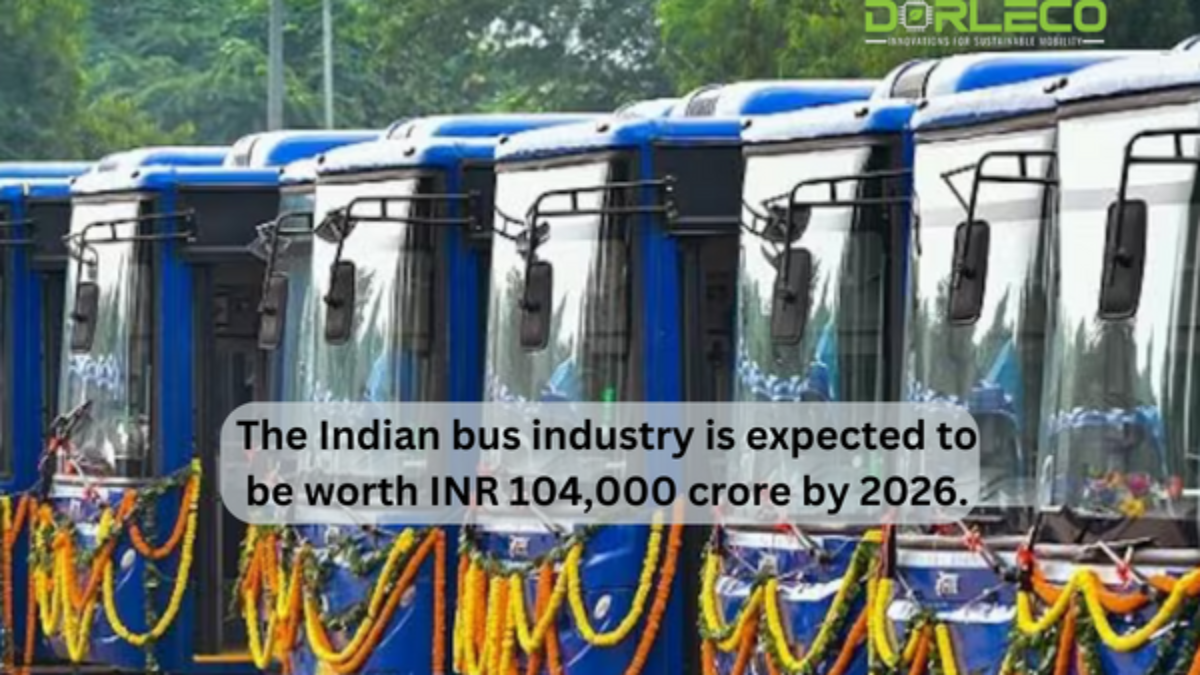The Indian bus industry overview
These and other figures have been disclosed in a paper co-authored by the Internet and Mobile Association of India (IAMAI) and Grant Thornton Bharat, titled “Traveltech 2.0: The Upcoming Stage of Digital Traveler Empowerment in India.” The study was made public during the India Digital Summit (IDS) 2024 on Wednesday in Mumbai.
In 2026, the Indian bus industry is expected to reach a valuation of INR 104,000 crores, with a compound annual growth rate (CAGR) of 6.64%. For State Transport Undertakings (STUs) and private buses, respectively, the CAGR is 6.36% and 7.37%.
These figures were disclosed in a paper co-authored by Grant Thornton Bharat and the Internet and Mobile Association of India (IAMAI), titled “Traveltech 2.0: The Next Phase of Digitally Empowering the Indian Bus Industry.” The research was unveiled on Wednesday in Mumbai during the India Digital Summit (IDS) 2024.
The potential for OTA service providers to offer value-added services to their clients besides basic online ticketing is enormous when it comes to surface transportation services like bus and train travel.
With over 70% of the market share, Karnataka, Maharashtra, Tamil Nadu, Andhra Pradesh, Telangana, and Uttar Pradesh emerged as the main markets in STUs. Uttar Pradesh, Maharashtra, Rajasthan, Punjab, and Haryana are the top five states regarding the total addressable market (TAM) for private buses. By 2026, these states are anticipated to hold a roughly 45% industry share.
Even while the price-sensitive category of non-AC buses or intra-city bus ticketing is still primarily offline-based, the number of bus travelers purchasing tickets online is increasing. State Transport Units (STUs) still handle the majority of intra-city bus service, which presents a significant opportunity for private sector participation.
Numerous value-added services, including digital ticketing and live bus tracking, are being made available in city buses through intra-city bus services. Bus riders in eight cities participated in a primary survey, and the results showed a strong interest in and adoption of online ticketing and value-added services.
There is a great deal of interest in online services as long as they provide certain features like information on seat availability and reservations, low prices, discounts, and multiple options at specific price ranges. This is true even though many users still avoid using online ticketing because they are sticking to old habits.
Reserved passengers account for 70% of the Indian Railways’ revenue, which is only 12% of the total number of passengers carried. In contrast, 88% of unreserved passengers contributed only 30% of the Indian Railways’ revenue.
In Indian Railways, online ticketing is currently limited to the majority of private
players, principally motivated by Indian Railways’ online ticketing systems. However, the survey projects that in the upcoming years, reserved ticketing will be important for OTAs and agents.
Working together with private OTAs presents a transformative possibility, as unreserved passengers make up a significant fraction of the entire passenger count. The Indian Railways’ operational costs are lessened by the switch to digital ticketing, which also gives private OTAs a chance to develop novel tariff schemes and improve customer convenience. This synergy may enhance the traveler experience, lighten the load on the infrastructure, and foster a win-win partnership that would boost the effectiveness of the railway system and create new opportunities for the private sector.
Indian ground transportation is transforming thanks to the efforts of buses and railways, according to Aloke Bajpai, Chairman, Managing Director, and Group CEO of ixigo. This market is expected to grow further due to improvements in infrastructure, rising internet penetration, modernization, and improved service quality from OTA-driven tech upgrades. Through the use of technology, OTAs are enabling travelers to make more informed travel choices and are at the forefront of the ground travel industry’s internet adoption.
The next phase of travel technology advancement will occur when OTAs’ full potential in the ground transportation industry is realized. The IAMAI Travel Tech report’s main takeaway is that. Eliminating tax inequalities between online retailers and online suppliers in the home market is crucial. There is presently an extra 5% GST that customers must pay when they reserve a non-AC bus online.
Direct reservations, whether made online or through another method, are free of charge, according to Redbus CEO Prakash Sangam.
PayTM Travel’s Chief Business Officer, Vikash Jalan, said during the same session that “the new IAMAI Travel Tech Report explores the role of technology in shaping India’s travel landscape, highlighting the impact of OTAs on ground transportation and calling for collaboration to bridge the digital divide and unlock the full potential of travel technology.”

